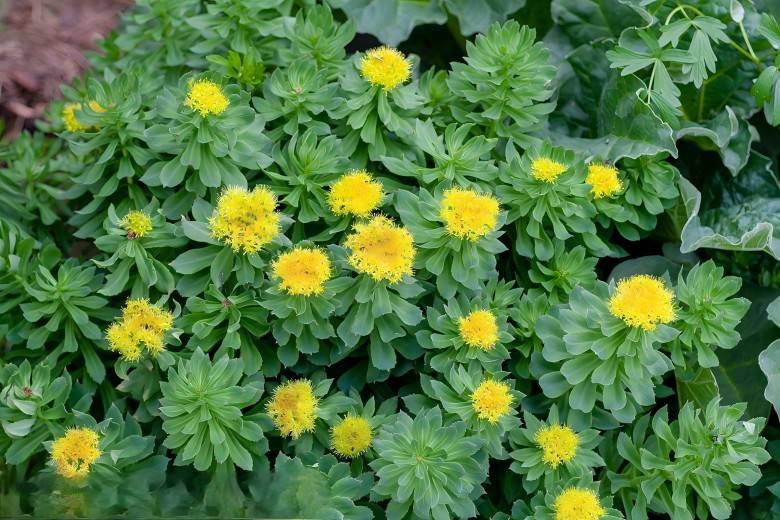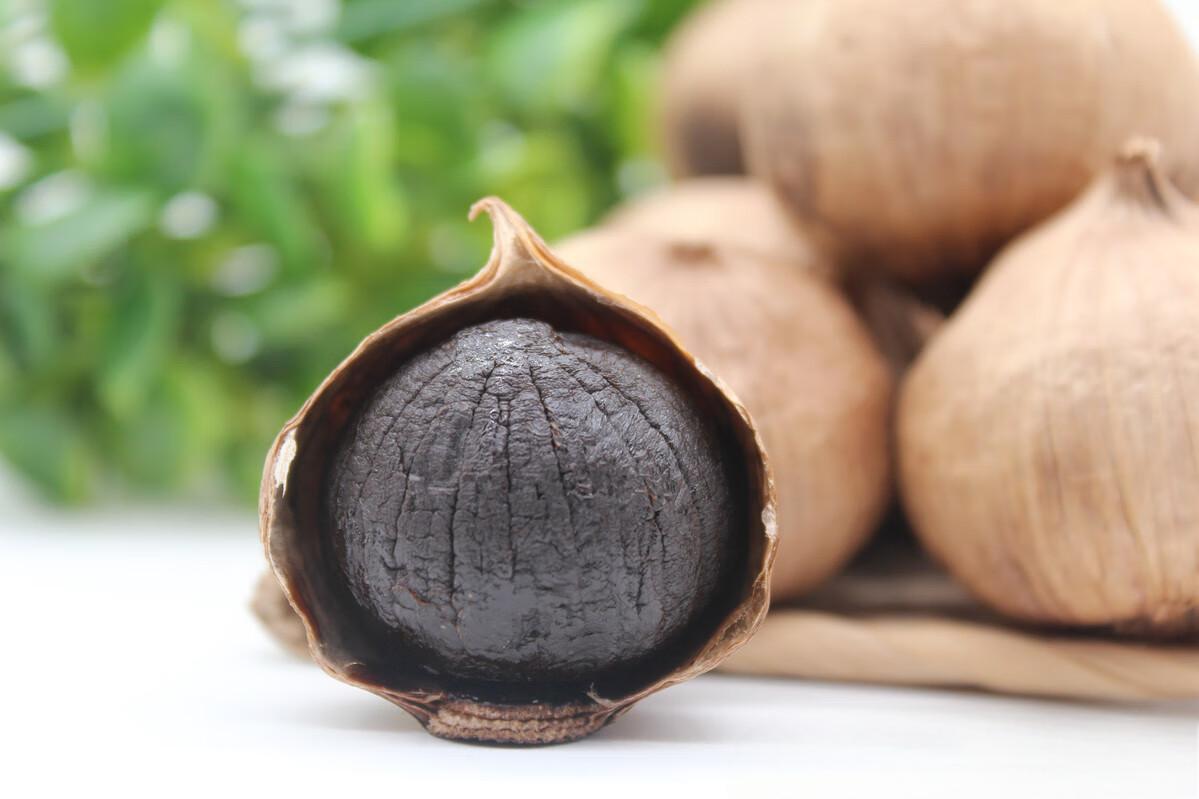The 6 Benefits of Red Ginseng Extract
Ginseng is derived from the dried roots and rhizomes of Panax ginseng C. A. Mey. in the family Wugazaceae [1]. Red ginseng is a concoction of ginseng, which is warmer and has the efficacy of tonifying vital energy, restoring the veins stabilizing the loss of blood, and benefiting the vital energy and blood intake, it is mainly produced in the northeast of China and the Korean Peninsula [2-4].
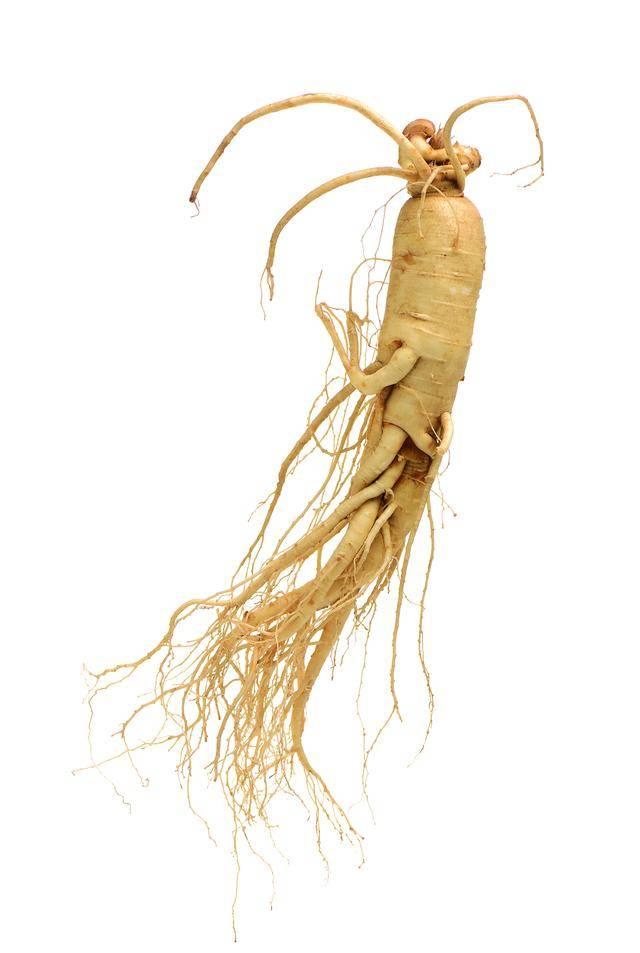
Studies [5-9] found that red ginseng has a variety of pharmacological effects such as anticancer, antioxidant, aging, anti-inflammatory, anti-diabetic, and anti-fatigue. Red ginseng contains saponins, polysaccharides, volatile oils, and other active substances, of which the main active ingredient is ginsenoside (more than 60 kinds) [10-13].
At present, the content of ginsenosides is the most important index to identify the quality of red ginseng [14-16]. Red ginseng, as a kind of valuable traditional Chinese medicine for both food and medicine, has been listed in the market in recent years as raw material for a series of medicines and health care products, such as ginseng and ginseng injection, ginseng tea, and wine, etc., and a series of by-products of red ginseng, such as red ginseng oil, red ginseng feed, etc., have also been gradually increased in development. In this paper, the bioactivity of red ginseng and the development and application of its products and by-products were systematically organized and reviewed, to provide a reference for the development of red ginseng and related products.
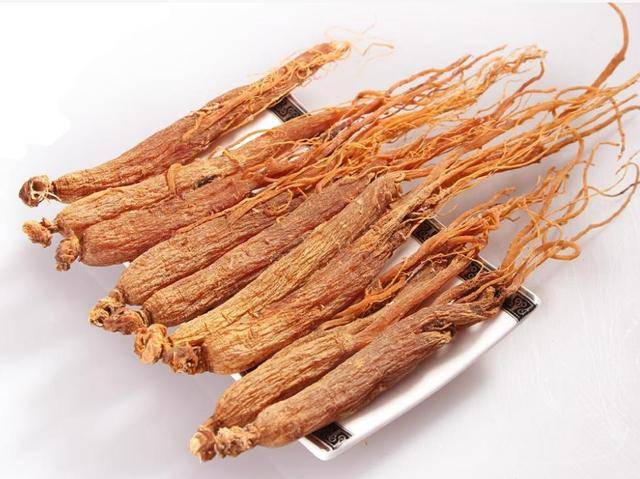
1.Pharmacological Benefits
1.1 Anti-cancer
Ginsenosides, acidic polysaccharides, and arginine disaccharides in red ginseng have been shown to inhibit the growth of cancer cells [17-18]. The main anticancer mechanisms of red ginseng include cell cycle arrest, induction of apoptosis, and inhibition of angiogenesis [19]. Studies [20] showed that red ginseng polysaccharides inhibited the proliferation of cancer cells and induced iron death in human non-small cell lung cancer cell line A549 and human triple-negative breast cancer cell line MDA-MB-231.
Panossian et al. [21-22] used transcriptomics to predict the potential of red ginseng and its unique ginsenoside Rg5 for the treatment of various cancers. Ginsenoside Rg3 has shown significant anticancer effects in various in vitro and in vivo experiments, and ginsenosides Rg3 and Rh2 can enhance the antitumor effects of conventional chemotherapeutic drugs and reduce drug-induced toxicity and improve drug resistance [23]. At present, the research on the anticancer chemical composition and mechanism of action of red ginseng is relatively systematic and in-depth.
1.2 Antioxidant and Aging Delay
Free radicals induce intracellular lipid peroxidation, and oxidative stress is the result of an imbalance between the production of reactive oxygen species and antioxidant capacity in the body. Oxidative stress impairs cell function, leading to aging and neurodegenerative diseases [24]. Ginsenosides, polysaccharides, arginine disaccharides, maltol, and other active ingredients in red ginseng can inhibit free radicals in the body and prevent over-oxidation [25-26]. Studies [27] have shown that red ginseng polysaccharides can reduce the content of malondialdehyde (MDA) in mouse serum, enhance the activities of superoxide dismutase (SOD) and glutathione peroxidase (GSH-Px), and exhibit good in vivo antioxidant activity.
Red ginseng has a unique effect on beauty, anti-wrinkle, and aging [28]. Ginsenoside Rb1 can effectively protect skin cells exposed to fine particulate matter (PM2.5), thereby reducing damage to skin keratinocytes and normal dermal fibroblasts [29]. Liu et al. [30] found that compound K, a metabolite of ginsenoside Rc, could counteract UV-induced damage to human skin fibroblasts, attenuate UV-induced photoaging, increase skin elasticity, and prevent hyperpigmentation.
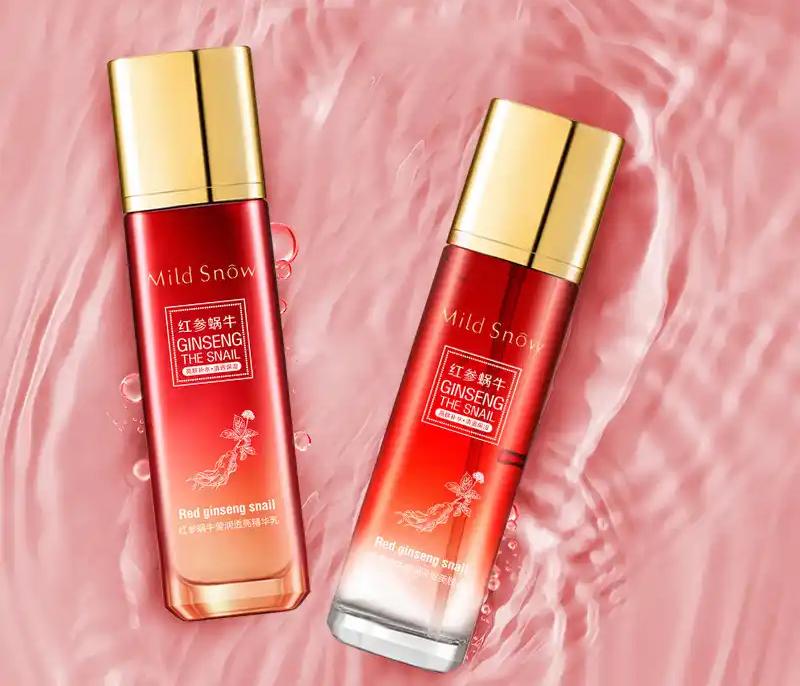
Hou et al. [31] found that red ginseng could extend the lifespan of Drosophila melanogaster, and play a role in delaying the aging process by preventing the degeneration of the thymus gland, and by modulating the expression of aging-related genes and immune cell subsets. Hou et al. [31] found that red ginseng could extend the lifespan of Drosophila by preventing thymus degeneration and regulating the expression of aging-related genes and immune cell subsets. In general, red ginseng extract and its active ingredients mainly scavenge free radicals to achieve antioxidant and aging-delaying effects.
1.3 Anti-degenerative Diseases of the Central Nervous System
The central nervous system plays a leading role in the regulation of human physiological functions. Neurological lesions caused by CNS disease and degeneration are mostly chronic diseases (e.g., epilepsy, Alzheimer's disease, etc.), which are not cured and have a high disability rate [32]. Alzheimer's disease is a neurodegenerative disease associated with aging. Shin et al. [33] found that polysaccharides in red ginseng could significantly reduce the mitochondrial defects of hippocampal neuronal cells caused by an accumulation of β-amyloid (A β) in mice with Alzheimer's disease, and increase the growth of neural nerve synapses of neural stem cells in the brains of mice.
Red ginseng polysaccharides can reduce the levels of Aβ 1-42, MDA, cAMP, and AChE in Drosophila brain tissue, and increase SOD activity, indicating that red ginseng polysaccharides have a therapeutic effect on Alzheimer's disease [32]. In addition, the total saponins in red ginseng can act on the brain center, causing an increase in the content of corticosterone in the serum and adrenal glands of rats [34]. Red ginseng can also induce key neurological changes. Namgung et al. [35] found that compared with the placebo group, the left parahippocampal gyrus of the red ginseng group showed a significant increase in the volume of gray matter and a greater enhancement of the composite cognitive score. The active components of red ginseng are complex, and current studies have mainly focused on the mechanism of action of red ginseng extracts on the central nervous system, with fewer studies on the effects of single components.
1.4 Anti-allergy
Red ginseng extract can be used in the treatment of allergic diseases, such as eczema, asthma, and allergic rhinitis [36]. It is mainly used to alleviate the symptoms of allergic diseases by regulating innate and adaptive immune cells [37]. In a study [38], red ginseng was found to inhibit the expression of interleukin (IL)-4, IL-5, and immunoglobulin E (IgE) by regulating the activation of mast cells, basophils, and eosinophils, thus reducing the clinical symptoms of allergic rhinitis, asthma, and itching.
Ginsenosides and ginsenosides are the main active ingredients in red ginseng extracts that play an anti-allergic role. Ginsenoside Rh2 can reduce allergic airway inflammation in ovalbumin-sensitized mice by regulating the activation of nuclear factor-κB (NF-κB) and the phosphorylation of p38-milk mitogen-activated protein kinase (MAPK) [39]. Most of the studies on the effects of red ginseng on allergic diseases are still in the animal experimental stage.
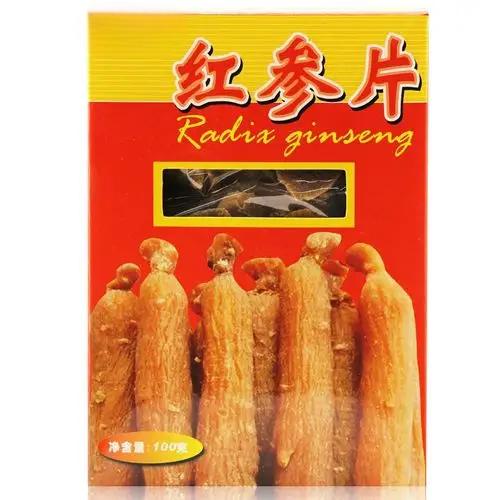
1.5 Anti-diabetes
Diabetes mellitus is a chronic metabolic disease characterized by hyperglycemia, which belongs to the category of “thirst-quenching” in Chinese medicine and is often accompanied by atherosclerosis, retinopathy, diabetic nephropathy, and other complications [40]. Red ginseng extract and its main active ingredient, ginsenoside, have antidiabetic effects. Yu Lei et al. [41] found that red ginseng polysaccharides can significantly reduce blood glucose, total cholesterol, triacylglycerol, and low-density lipoprotein levels in diabetic mice.
Hong et al. [42] demonstrated that red ginseng was able to prevent the destruction of pancreatic tissues caused by streptozotocin (STZ) and restore insulin secretion, improve type 1 diabetes, and restore immune cell compartments. Red ginseng extract modified by pectin cleavage enzyme (GS-E3D) can improve glucose tolerance abnormalities associated with obesity by increasing insulin sensitivity in the adipose tissue of the epididymis [43]. GS-E3D can also inhibit the accumulation of advanced glycosylation end-products (AGE) and oxidative stress, and improve diabetes-induced renal dysfunction [44]. Red ginseng mainly plays an auxiliary role in the treatment of diabetes and its complications.
1.6 Anti-inflammation
Red ginseng extract can reduce the number of ovalbumin-induced inflammatory cells in the bronchoalveolar lavage fluid of asthmatic mice, suggesting that red ginseng can inhibit inflammation by inhibiting the production of reactive oxygen species [45]. Red ginseng extract can inhibit the secretion of pro-inflammatory factors by interrupting the signaling pathways such as MAPK and NF-κB [46]. The use of red ginseng in inflammation is relatively rare, and the above studies provide evidence for the use of red ginseng in anti-inflammation.
2. Red Ginseng Comprehensive Application Status
2.1 Application in Medicine
In 2000, the first preparation containing natural ginsenoside Rg3, Ginsen-1 capsule, was successfully marketed, which is the first class of antitumor drugs in Chinese traditional medicine in China.Rg3 has a clear therapeutic effect on gastric cancer, colon cancer, hepatocellular cancer non-small-cell lung cancer, etc., and it is often used in conjunction with chemotherapeutic drugs to enhance the therapeutic effect and reduce the toxic side effects [47]. It is often used together with chemotherapeutic drugs to enhance the therapeutic effect and reduce the toxic side effects [47].
A study [48] proved that chemotherapy combined with Shenyi capsule can improve the immune function of lung cancer patients and prevent thrombosis. Another study [49] showed that chemotherapy combined with Ginseng capsules could effectively improve the quality of life of patients with advanced esophageal cancer. Wang et al. [50] investigated the clinical efficacy of Ginseng injection and conventional treatment for the acute stage of chronic heart failure and found that the cardiac tolerance of patients in the Ginseng injection group was improved, and the clinical symptoms were significantly improved compared with those of the conventional treatment group.
The clinical efficacy of Ginseng injection in the acute stage of chronic heart failure was investigated in the conventional treatment group. Ginseng-mai injection, which is composed of red ginseng and maitake, has the effects of benefiting qi and consolidating dehiscence, nourishing yin, and generating body fluid. Clinical trials [51] found that ginseng-mai injection could improve the clinical symptoms of patients with acute exacerbation of chronic obstructive pulmonary disease (COPD), especially the improvement of lung function.
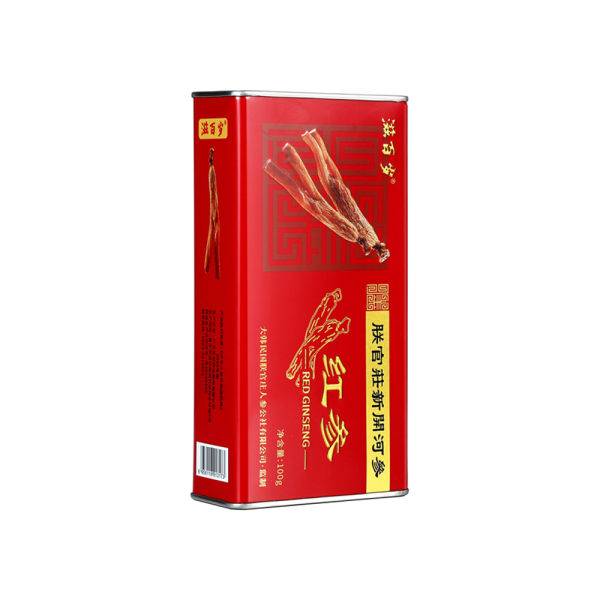
2.2 Application in Health Products
Red ginseng is popular as a functional food in many Asian countries. Drugs made from red ginseng need to undergo strict clinical trials, while the standard of health products is lower than that of drugs. There are many kinds of health products such as wine, tea, oral liquid, etc. made from red ginseng, and the market prospect is good [52-53].
The effects of red ginseng health products are mainly focused on relieving fatigue, enhancing immunity, and antioxidants. Both capsules have anti-fatigue effects and can relieve cancer-related fatigue [54]. Jung et al. [55] studied milk with red ginseng extract and found that red ginseng can promote the increase of lactose and total solids content of milk, while the fat and protein content remains unchanged, and the antioxidant property of milk with red ginseng is enhanced, so it can be used as a functional food.
Gao Xuefeng et al [56] developed red ginseng, pomegranate, and collagen peptide composite health drink, which is sweet and sour, with the aromatic smell of pomegranate and red ginseng, and has high nutritional value, and can be used as a daily drink for energy supplementation. With the development of the economy, technological progress, and the enhancement of people's awareness of health care, red ginseng has been more and more widely used in daily life and is expected to become a common raw material for health food.
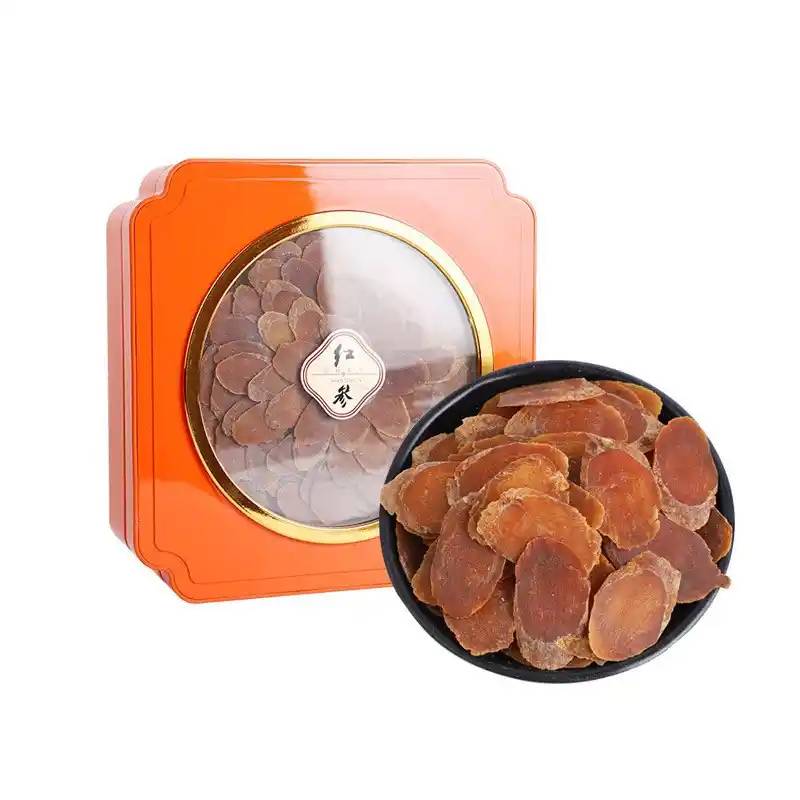
2.3 Application in Cosmetics
Red ginseng has become one of the most widely used cosmetic raw materials because of its unique effects and safety properties in whitening, anti-wrinkle, aging, and hair care. Ginsenoside is the most important active ingredient in red ginseng with cosmetic and skincare effects [28]. Compound K, a metabolite of ginsenoside Rb1, has moisturizing and aging-delaying effects, and cosmetic products with compound K can protect the skin from ultraviolet rays and increase the water content of the skin [57].
Red ginseng extract can inhibit the activities of tyrosinase and elastase, further confirming the potential of red ginseng as a cosmeceutical [58]. Park et al. [59] found that red ginseng extract promoted the proliferation of human dermal papilla cells and activated the extracellular regulatory protein kinase (ERK) signaling pathway, which up-regulated the proliferation of keratinocytes of the hair matrix and inhibited dihydrotestosterone-induced androgen receptor transcription. These results confirm the effectiveness of the red ginseng extract-based hair care products.
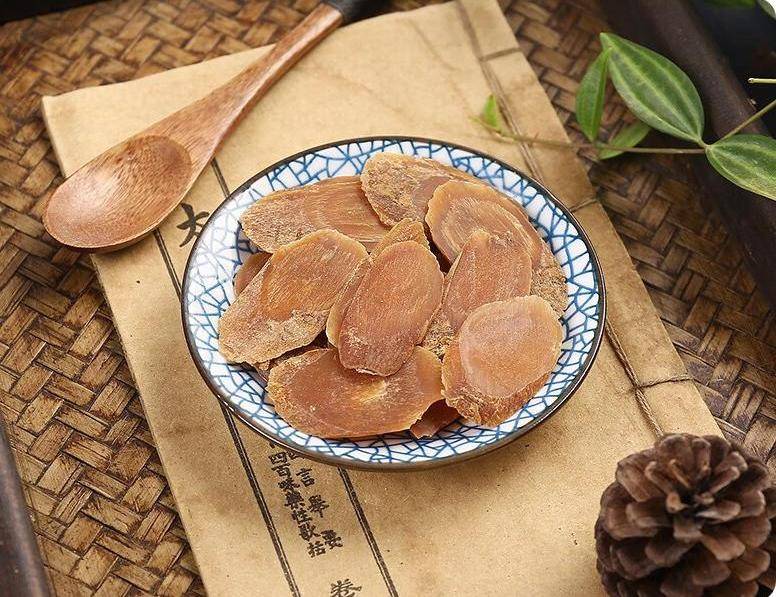
3.Summary and Outlook
3.1 Prospects of Biological Activities of Red Ginseng
In recent years, most of the studies on the biological activities of red ginseng have been on saponins, especially on rare saponins. The studies on the pharmacological effects of red ginseng have focused on anticancer, aging, antioxidant, antidiabetic, and central nervous system pathology, and a few studies on antiallergic and anti-inflammatory activities have also been conducted. At present, most of the studies on the biological activities of red ginseng are still in the stage of animal experiments, and it will take some time for its real effects to be realized in human beings.
References:
[1] National Pharmacopoeia Commission. Pharmacopoeia of the People's Republic of China (2020 Edition): a [M]. Beijing: China Medical Science and Technology Press, 2020: 160.
[2] SUN Na, XU Gang, XU Shan, et al. Effects of ginseng concoction on its chemical composition and pharmacological effects [J]. Chinese Pharmacy, 2016, 27(6): 857-859.
[3] Wang Yunmei. Comparative study on Chinese red ginseng and Koryo red ginseng [J]. Journal of Chinese Medicine, 2003, 18(2):178-180.
[4] LIM J S, KIM C R, SHIN K S, et al. Red ginseng extract and γ⁃aminobutyric acid synergistically enhance immunity against cancer cells and antitumor metastasis activity in mice[J]. J Med Food, 2023, 26(1):27-35.
[5] IM K, KIM J, MIN H. Ginseng, the natural effectual antiviral: Protective effects of Korean red ginseng against viral infection [J]. J Ginseng Res, 2016, 40(4):309-314.
[6] CHU Chu, CHEN Cen, LI Xingnuo, et al. Research progress on the effect of red ginseng concoction on quality[J]. Chinese herbal medicine, 2014, 37(5):901-905.
[7 ]SUNG W S, KANG H R, JUNG C Y, et al. Efficacy of Korean red ginseng (Panax ginseng) for middle-aged and moderate level of chronic fatigue patients: A randomized, double-blind, placebo-controlled trial[J]. Complement Ther Med, 2020, 48:102246.
[8] ZHOU Qi-Le, XU Wei, YANG Xiu-Wei. Research on the chemical composition of Chinese red ginseng [J]. Chinese Journal of Traditional Chinese Medicine, 2016, 41(2):233-249.
[9] CAI Baochang, QIN Kunming, WU Hao, et al. Study on the chemical mechanism of Chinese medicine concoction process[J]. Chemistry Progress, 2012, 24(4):637-649.
[10 ]ZHANG H, ABID S, AHN J C, et al. Characteristics of Panax ginseng cultivars in Korea and China[J]. Molecules, 2020, 25(11): 2635.
[11] ZHANG Xuyu. Separation and purification of polysaccharides from red ginseng, structural analysis and immunomodulatory activity[D]. Chongqing: Chongqing Medical University, 2022.
[ 12 ] HAM S W, KIM J K, JEON H Y, et al. Korean red ginseng extract inhibits glioblastoma propagation by blocking the Wnt signaling pathway[J]. J Ethnopharmacol, 2019, 236:393-400.
[13] SHIN J H, PARK Y J, KIM W, et al. Change of ginsenoside profiles in processed ginseng by drying, steaming, and puffing [J]. J Microbiol Biotechnol, 2019, 29(2):222-229.
[ 14 ] Yuan Xiuping. Research progress on the determination of rare saponin content in red ginseng and black ginseng [J]. Pharmaceutical Biotechnology, 2020, 27(1): 88-90.
[15] LI Ling, JIANG Meifang, ZHAO Linsong, et al. Chemical composition and rapid nondestructive identification of ginseng powder from forest ginseng, garden ginseng, red ginseng and American ginseng[J]. Shanghai Journal of Traditional Chinese Medicine, 2023, 57(1): 76-86.
[16] LIU Ju, LI Lingming, YU Heshui, et al. Research progress on quality control of red ginseng based on near infrared spectroscopy [J]. Chinese herbal medicine, 2018, 49(9): 2210-2214.
[17] MA Wenxuan, ZHOU Boyu, ZHANG Jingying, et al. Research progress on the effects of active ingredients of red ginseng, lily of the valley, and Zhimu on immune function[J]. Chinese Health Engineering, 2023, 22(2): 282-286.
[18 ]HYUN S H , KIM S W , SEO H W , et al. Physiological and pharmacological features of the non-saponin components in Korean red ginseng[J]. J Ginseng Res, 2020, 44(4):527-537.
[19] PANOSSIAN A, ABDELFATAH S, EFFERTH T. Network pharmacology of ginseng (Part Ⅲ ): Antitumor potential of a fixed combination of red ginseng and red sage as determined by transcriptomics. sage as determined by transcriptomics[J]. Pharmaceuticals(Basel),2022,15(11):1345.
[20 ]ZHAI F G, LIANG Q C, WU Y Y, et al. Red ginseng polysaccharide exhibits anticancer activity through GPX4 downregulation-induced ferroptosis[J]. Pharm Biol, 2022, 60(1):909-914.
[21 ]PANOSSIAN A , ABDELFATAH S , EFFERTH T. Network pharmacology of ginseng(Part Ⅱ ): The differential effects of redginseng and ginsenoside Rg5 in cancer and heart diseases as determined by transcriptomics[J]. Pharmaceuticals(Basel), 2021, 14( 10):1010.
[22 ]PANOSSIAN A , ABDELFATAH S , EFFERTH T. Network pharmacology of red ginseng(Part I): Effects of ginsenoside Rg5 at physiological and sub-physiological concentrations[J]. Pharmaceuticals (Basel),2021,14( 10):999.
[23 ]SUN M,YE Y,XIAO L,et al. Anticancer effects of ginsenoside Rg3 (Review)[J]. Int J Mol Med,2017,39(3):507-518.
[24 ]SHANG Z ,FAN M ,ZHANG J ,et al. Red ginseng improves D- galactose-induced premature ovarian failure in mice based on network pharmacology[J]. Int J Mol Sci,2023,24(9):8210.
[25 ]LEE D K ,PARK S ,LONG N P ,et al. Research quality-based multivariate modeling for comparison of the pharmacological effects of black and red ginseng[J]. Nutrients,2020,12(9):2590.
[26 ]PARK S K,HYUN S H,IN G,et al. The antioxidant activities of
Korean Red Ginseng(Panax ginseng)and ginsenosides:A systemic review through in vivo and clinical trials[J]. J Ginseng Res,2021,45 ( 1):41-47.
[27] LIU Jiawei, YUE Chaoying, WU Yue, et al. Study on antioxidant capacity of red ginseng polysaccharide in mice [J]. China Food Additives, 2019, 30(9): 68-71.
[28 ]Li Yumei, Wang Peng, Zhang Hongyan, et al. Research progress on the active ingredients of red ginseng and their role in cosmetics[J]. Chemical Management, 2022, 36(25): 96-98.
[29 ]PIAO M J ,KANG K A,ZHEN A X,et al. Particulate matter 2.5 mediates cutaneous cellular injury by inducing mitochondria- associated endoplasmic reticulum stress: Protective effects of ginsenoside Rb1[J]. Antioxidants(Basel),2019,8(9):383.
[30 ]LIU X Y,LI H,HWANG E,et al. Chemical distance measurement and system pharmacology approach uncover the novel protective effects of biotransformed ginsenoside C-Mc against UVB-irradiated photoaging[J]. Oxid Med Cell Longev,2022,2022:4691576.
[31] HOU W, PEI J. Proteomic analysis of red ginseng on prolonging the lifespan of male Drosophila melanogaster [J]. Front Pharmacol, 2021, 12:618123.
[32] BAI Yuying, XU Xinfang, ZHANG Shuyan, et al. Study on the effect and mechanism of red ginseng polysaccharide on the prevention and treatment of Alzheimer's disease in Drosophila melanogaster based on Aβ42 transgenic flies[J]. World Traditional Chinese Medicine, 2023, 18
(15):2148-2153.
[33 ]SHIN S J, NAM Y, ARK Y H, et al. Therapeutic effects of non-saponin fraction with rich polysaccharide from Korean red ginseng on aging and Alzheimer´s disease [J]. disease[J]. Free Radic Biol Med, 2021, 164: 233-248.
[34] LI Jingcai, MA Rumeng, WANG Yukun. Comparison of pharmacological effects of Chinese red ginseng and Korean red ginseng [J]. Comparison of the pharmacological effects of Chinese red ginseng and Korean red ginseng [J]. Journal of Shenyang Pharmaceutical College, 1988, 5( 1):20-24.
[35 ]NAMGUNG E , KIM J , JEONG H , et al. Effects of Korean red ginseng on human gray matter volume and cognitive function: a voxel- based morphometry study[J]. J]. Hum Psychopharmacol, 2021, 36(2): e2767.
[36] ZHOU Qiuqiu, REN Jianming, WANG Yanhong, et al. Progress of research on the concoction, chemical composition, and pharmacological activity of red ginseng [J]. Shanghai Journal of Traditional Chinese Medicine, 2016, 50(2): 97-100.
[37 ]HAN M J ,KIM D H. Effects of red and fermented ginseng and ginsenosides on allergic disorders[J]. Biomolecules,2020,10(4):634.
[38 ]YOON S J,KIM S K,LEE N Y,et al. Effect of Korean red ginseng on metabolic syndrome[J]. J Ginseng Res,2021,45(3):380-389.
[39 ]PARK E K ,CHOO M K ,KIM E J ,et al. Antiallergic activity of ginseng and ginsenoside Rg5 in cancer and heart diseases as determined by transcriptomics[J]. Pharmaceuticals(Basel), 2021, 14( 10):1010.
[40]PANOSSIAN A , ABDELFATAH S , EFFERTH T. Network pharmacology of red ginseng(Part I): Effects of ginsenoside Rg5 at physiological and sub-physiological concentrations[J]. Pharmaceuticals (Basel),2021,14( 10):999.
[41 ]SUN M,YE Y,XIAO L,et al. Anticancer effects of ginsenoside Rg3 (Review)[J]. Int J Mol Med,2017,39(3):507-518.
[42 ]SHANG Z ,FAN M ,ZHANG J ,et al. Red ginseng improves D- galactose-induced premature ovarian failure in mice based on network pharmacology[J]. Int J Mol Sci,2023,24(9):8210.
[43 ]LEE D K ,PARK S ,LONG N P ,et al. Research quality-based multivariate modeling for comparison of the pharmacological effects of black and red ginseng[J]. Nutrients,2020,12(9):2590.
[44]PARK S K,HYUN S H,IN G,et al. The antioxidant activities of
Korean Red Ginseng(Panax ginseng)and ginsenosides:A systemic review through in vivo and clinical trials[J]. J Ginseng Res,2021,45 ( 1):41-47.
[45]PIAO M J ,KANG K A,ZHEN A X,et al. Particulate matter 2.5 mediates cutaneous cellular injury by inducing mitochondria- associated endoplasmic reticulum stress: Protective effects of ginsenoside Rb1[J]. Antioxidants(Basel),2019,8(9):383.
[46 ]LIU X Y,LI H,HWANG E,et al. Chemical distance measurement and system pharmacology approach uncover the novel protective effects of biotransformed ginsenoside C-Mc against UVB-irradiated photoaging[J]. Oxid Med Cell Longev,2022,2022:4691576.
[47 ]HOU W,PEI J. Proteomic analysis of red ginseng on prolonging the lifespan of male Drosophila melanogaster[J]. Front Pharmacol,2021, 12:618123.
[48]SHIN S J ,NAM Y ,ARK Y H ,et al. Therapeutic effects of non- saponin fraction with rich polysaccharide from Korean red ginseng on aging and Alzheimer´s disease[J]. Free Radic Biol Med,2021,164: 233-248.
[49] LI Jingcai, MA Rumeng, WANG Yukun. Comparison of pharmacological effects of Chinese red ginseng and Korean red ginseng [J]. Comparison of the pharmacological effects of Chinese red ginseng and Korean red ginseng [J]. Journal of Shenyang Pharmaceutical College, 1988, 5( 1):20-24.
[50]NAMGUNG E ,KIM J ,JEONG H ,et al. Effects of Korean red ginseng on human gray matter volume and cognitive function:A voxel- based morphometry study[J]. Hum Psychopharmacol,2021,36(2): e2767.
[51] ZHOU Qiuqiu, REN Jianming, WANG Yanhong, et al. Progress of research on the concoction, chemical composition and pharmacological activity of red ginseng [J]. Shanghai Journal of Traditional Chinese Medicine, 2016, 50(2):97-100.
[52 ]HAN M J ,KIM D H. Effects of red and fermented ginseng and ginsenosides on allergic disorders[J]. Biomolecules,2020,10(4):634.
[53 ]YOON S J,KIM S K,LEE N Y,et al. Effect of Korean red ginseng on metabolic syndrome[J]. J Ginseng Res,2021,45(3):380-389.
[54]PARK E K ,CHOO M K ,KIM E J ,et al. Antiallergic activity of ( 11):1015-1023.
[59 ]PARK G H ,PARK K Y ,CHO H I ,et al. Red ginseng extract promotes the hair growth in cultured human hair follicles[J]. Med Food,2015,18(3):354-362.


 English
English French
French Spanish
Spanish Russian
Russian Korean
Korean Japanese
Japanese
